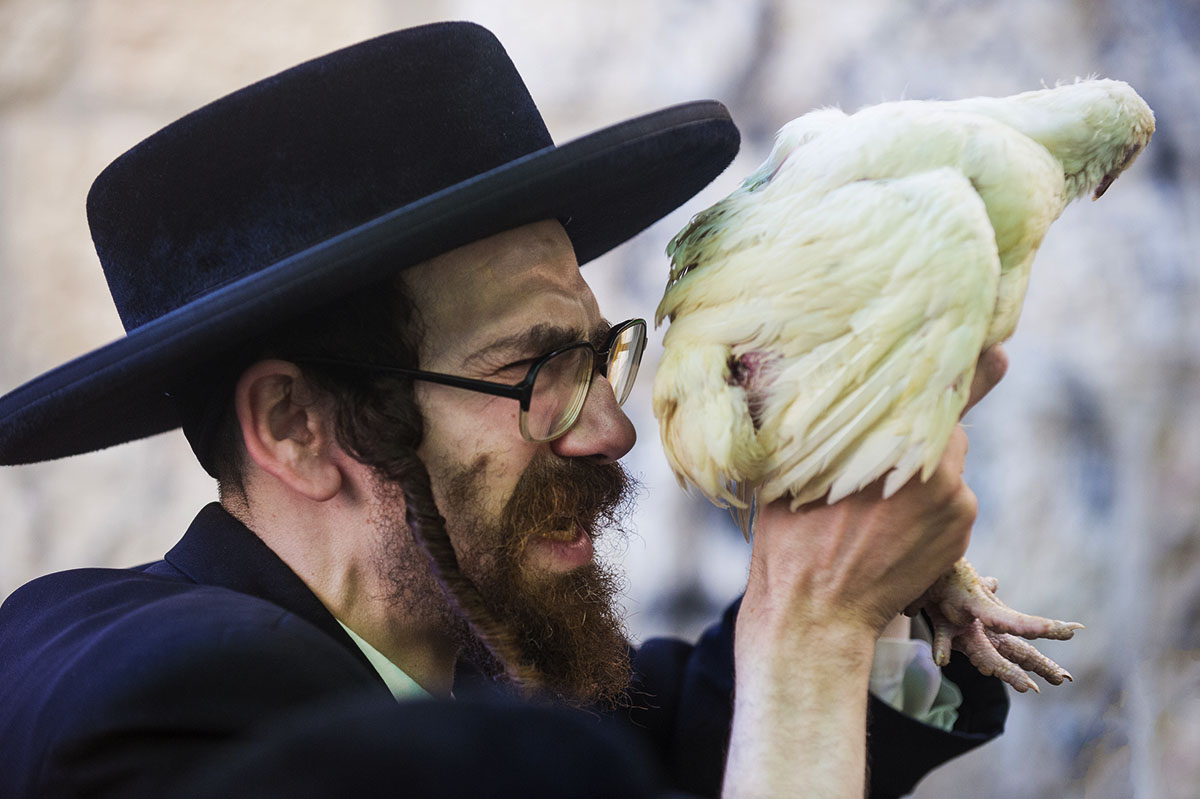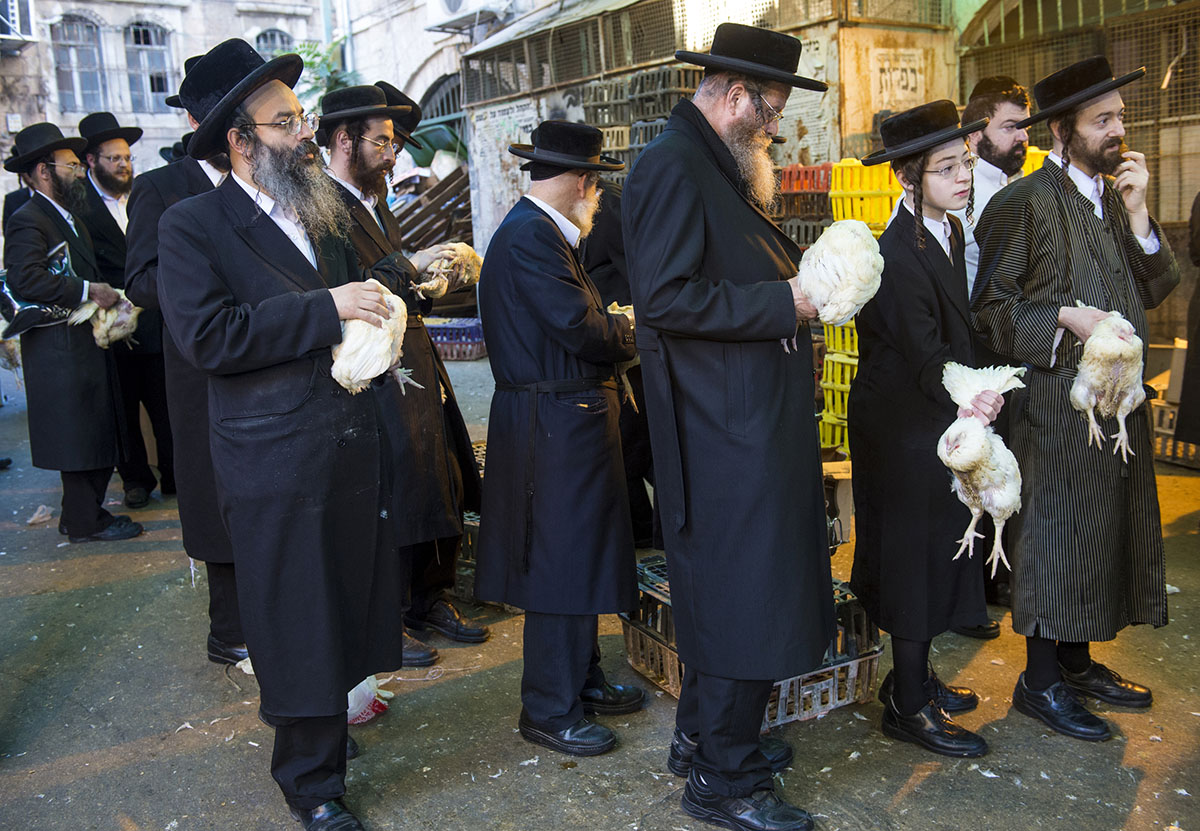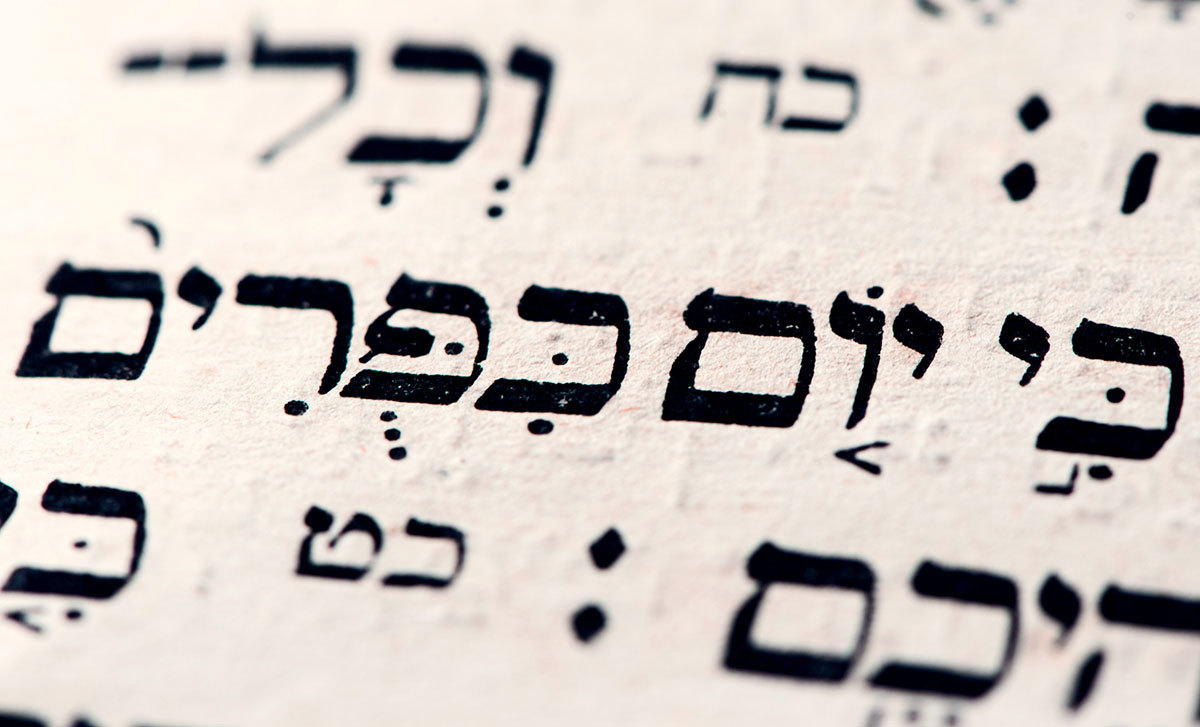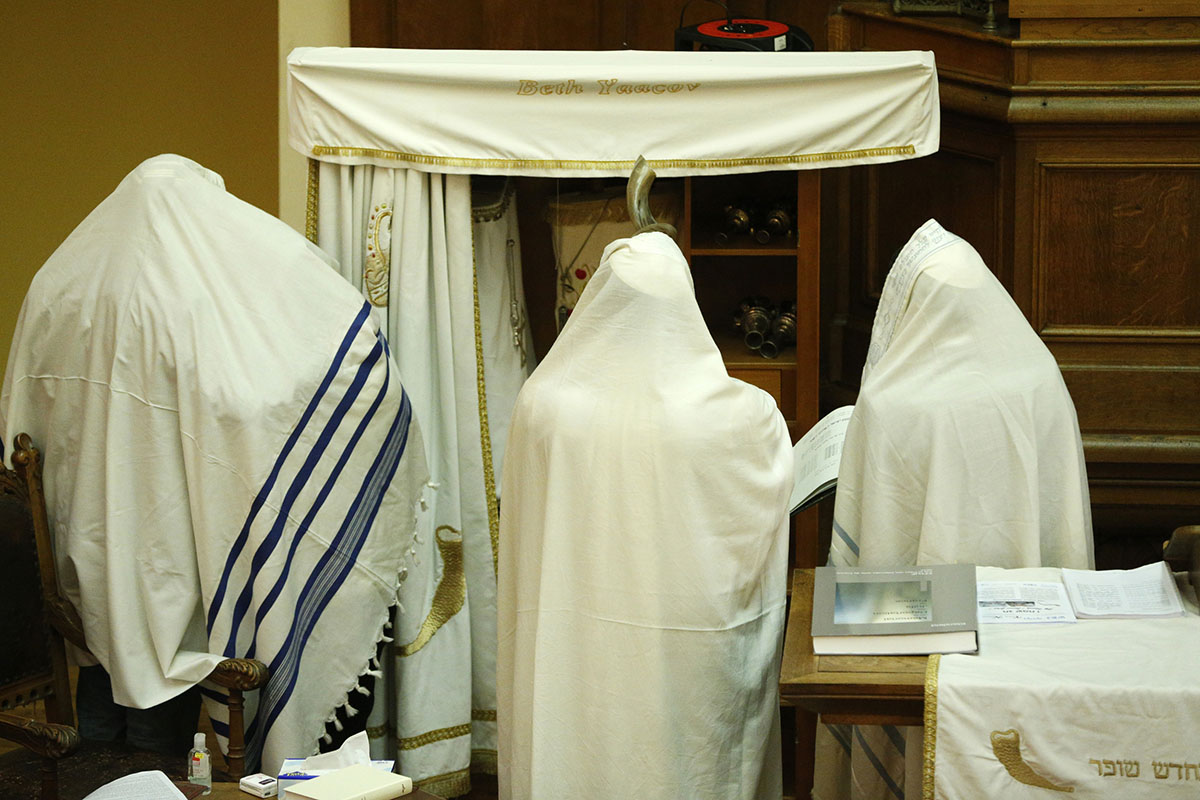
Yom Kippur: Judgment Day!
This Friday evening, Israel remembers
Yom Kippur, the Day of Atonement “covering”, which is the sixth of the seven Biblical feasts given by God to the nation Israel (Lev. 23:26-32). Observed on the tenth day of the seventh month (Tishrei), it is perhaps the most solemn day on the Jewish calendar. God commanded Israel to observe the Day of Atonement because they were a sinful people in need of cleansing so that they might have continued fellowship with Him. Yom Kippur is also the culmination of the “Days of Awe,” the ten-day period of self-examination and repentance that begins on Rosh Hashana when, it is believed, the books are opened in heaven. The object of this period is to be properly inscribed, for on Yom Kippur it is believed that the books are closed, and thus the person is sealed for the next year.

Chickens for Atonement – No Temple and No Sacrificial Lamb since 70 AD – As Prophesied by Yeshua
The Bible commands the Jewish people not to perform work on the Day of Atonement and to afflict their souls (today this is interpreted to mean fasting). The central figure in the Biblical observance was the High Priest (Lev. 16). It was the High Priest who alone had to make atonement for himself, for his household, and for the people of Israel. He would prepare for these most important duties, beginning seven days before Yom Kippur. The High Priest would be separated from his own household and take up residence inside the Temple. On the morning of Yom Kippur, as the people crowded outside the sanctuary, the High Priest would emerge to begin the series of rituals and offerings.
Unlike the other days of the year, the High Priest alone had to perform the daily offerings and sacrifices, in addition to the special sacrifices for the Day of Atonement. He began by removing his clothing and ceremonially cleansing himself in a special place used only on Yom Kippur. He then donned his golden vestments and completed the morning service. He put off his golden apparel and, after washing yet again, put on the white linen garments that God commanded he wear when performing the atoning sacrifices (Lev. 16:4).

Yom Kippur in Hebrew Text
The High Priest then took a bullock that was to be offered for himself. Laying his hands on the head of the bullock, he would confess his sins and the sins of his household. Putting this bullock aside, he would take two identical goats (Lev. 16:5) and draw lots. These special lots were made of gold and had the inscriptions “for the Lord” and “for Azazel” (scapegoat in our Bibles). The goat, for which the lot “for the Lord” fell, would be killed while the goat for which the lot “for Azazel” fell would be left alive to bear the sins of the nation. To distinguish between these two goats, a red-woolen thread would be tied to the head of the scapegoat.

The High Priest, atoning for the Holy of Holies, the tabernacle, and the altar, took the goat that was designated “for the Lord.” The goat was slain and the blood caught in another basin. He then entered again into the Holy of Holies and sprinkled the blood as before. The High Priest then came back into the Holy Place and took the blood of the bull and sprinkled the veil that separated the Holy of Holies from the Holy Place. He did the same with the blood of the goat. The blood was mixed together, and the High Priest sprinkled the mixed blood on the horns of the altar of incense. The blood was also sprinkled on the altar of sacrifice to cleanse it. The remaining blood was poured at the base of that altar.
These acts by the High Priest were full of high drama and much suspense. The people who were gathered to observe the ritual knew well that if God did not accept the sacrifices, He would strike the High Priest dead in the Holy of Holies, and the nation’s sins would not be covered. Interestingly, a rope was tied to the High Priest in case he died in the most Holy Place. This way, his body could be pulled out without someone having to go in to get him, which would result in that person’s death. In other words, the people completely relied on the work of the High Priest. Thus, when the High Priest emerged from the tabernacle, his appearance was a cause of much celebration and joy among the people.

Rope tied around High Priests leg in case he died in the Holy of Holies
The final act in the atoning work of the High Priest involved dispensing of the nation’s sins. The High Priest laid his hands upon the head of the scapegoat and confessed the sins of the nation. An appointed man (who became temporarily ceremonially unclean) then led the goat away. According to the Bible (Lev. 16:21-22), the goat was to be led into the wilderness and left there. In time, the Jewish people, however, were concerned that the goat would find its way back into the camp and thus bring back the sins of the nation. To ensure that the sins of the nation, carried away by the scapegoat, could never return to them, the scapegoat was led up to a steep cliff and thrown down. According to tradition, the red thread, which was attached to the scapegoat’s head, would turn white, thus signifying that God had accepted the sacrifices and that the nation’s sins were covered for another year.
With his atoning work completed, the High Priest would take off his linen garments, wash, and put on his golden vestments again. He would then offer two rams for a burnt offering and several other offerings prescribed for that day. His work was thus complete.

Observant Jews gathering at synagogue for Yom Kippur
It can be clearly seen that the Biblical observance of Yom Kippur was entirely centered upon the work of the High Priest. The only responsibility of the people was to abstain from work and to afflict their souls.
The entire Yom Kippur observance changed drastically after 70 A.D. With no Temple, no priesthood, and no sacrifices, the Jewish people had to develop ways of complying with the Biblical prescription to atone for their sins every year. The rabbis thus developed a tradition that prayer, repentance, and charity (good works) would atone for the sins of the nation. While it is understandable that they would seek a new course without the Temple, such a course is unfortunately not Biblical. God never changed His requirement for a blood atonement, and though they have developed interesting arguments to support their claims, careful scrutiny reveals that they are wrong. The evening services of Yom Kippur commence with the recitation of the Kol Nidre (All Vows) in which they renounce unfulfilled personal vows and oaths. Synagogue services are accompanied by a day of fasting in order to “afflict one’s soul.”
The atoning sacrifice is missing. It is interesting to note, however, that there is still a small segment in the Orthodox community who believe that a substitutionary death is needed through the practice of kapparot. The day before Yom Kippur, someone obtains a live chicken. The person confesses his sins over the chicken while circling it over his head. The chickens are eventually killed and thus provide blood atonement for sins.

Seeking atonement without the blood of Yeshua is pointless
The prophetic fulfillment of the Day of Atonement will be that of the final cleansing of the nation of Israel prior to the Millennial Kingdom when it experiences national atonement. The High Priest, instrumental in the Biblical observance of the Day of Atonement, foreshadowed the Great High Priest who was to come! The Book of Hebrews details how Yeshua the Messiah is better than the Levitical High Priest and how Yeshua’ sacrifice of Himself was better than all the offerings of the Levitical Priesthood.
Just as the High Priest temporarily removed his golden vestments and donned his plain, linen garments before performing his atoning work, Yeshua the Messiah temporarily left His glory and came to earth as the God-man. He then performed His atoning work on the tree at Calvary, sprinkling His blood for the sins of all men in the true Holy of Holies in heaven (Heb. 9:12). When Yeshua finished His work, He took on His glory once again, as the High Priest did in putting back on His priestly garments, and went to His Father’s house.
However, unlike the Levitical High Priest who had to repeat these sacrifices year after year after year, Yeshua provided atonement only once, perfecting salvation to all who believe (Heb. 9:26). Just as with the High Priest, no one can save himself but must rely completely on Him. Finally, when the High Priest performed his work of atonement for himself and for the nation, he did so standing up. In fact, a chair was never part of the furniture of the Tabernacle or the Temple. When He finished His work, Yeshua sat on the right hand of God (Heb. 1:3), signifying that His work was forever accomplished. Jewish tradition tells us that for a full forty years prior to the destruction of the Temple, the red thread on the scapegoat’s head did not turn white. Thus from the time of Yeshua’s work on the cross until the sacrifices ended when the Romans sacked the Temple, God, according to the Talmud, did not accept the sacrifices of bulls and goats! Although we cannot prove that this actually happened, it is very interesting to note that the Jewish writings contain this statement.
…because it is impossible for the blood of bulls and goats (and chickens) to take away sins. (Heb. 10 4)
… but with His own blood He entered the Most Holy Place once for all, having obtained eternal redemption. (Heb. 9:12)
… how much more shall the blood of Messiah (Yeshua), who through the eternal Spirit offered Himself without spot to God, cleanse your conscience from dead works to serve the living God? (Heb. 9:12)
… And for this reason He is the Mediator of the new covenant, by means of death, for the redemption of the transgressions under the first covenant, that those who are called may receive the promise of the eternal inheritance.
Yeshua said, “If anyone wishes to come after Me let him deny himself and take up his cross and follow me” (Matt 16:24) If we are in the Messiah we are a new creation, old things are passed away and all things are made new! Therefore we are able through Yeshua to truly deny ourselves and walk in His ways. It is only through Him that we are able to face the wretchedness of self and cast away the works of darkness and walk in the Light even as He is in the Light.

Yom Kippur is a time to purge those ways we do not like in ourselves and renew our souls to Him – to do “Teshuva” repentance, not only for the wrong things we have done this past year, but also consciously turning our hearts back to God. and seek Him with all diligence until He returns! ( Special thanks to ShalomNYC for this awesome teaching)
Israel responds to Disaster in Mexico
Once again in the face of tragedy the IDF and organizations like IsraAID are first on the ground to respond. Israel received a request for assistance from Mexico following the severe earthquake last Tuesday night, and in response a 50-member team of the IDF Search and Rescue Unit departed immediately with a planeload of equipment and medical supplies. Below, the Israel Defense Forces assess the damage with their first response delegation sent to Mexico. Engineering evaluation and assistance is one of the central necessities that Mexico’s disaster area needs. The engineering experts on the IDF delegation will evaluate the infrastructure and terrain in the area in order to determine which buildings are safe to use.
Mexico, Israel stands with you!
FZS Jerusalem
We also wanted to send you a brief update on our recent activities in blessings the Jewish people with Yeshua’s love at our clothing distribution center in Jerusalem. We are always blessed to be able to meet so many young Immigrants during our distribution days and we also get the privilege to interact with some of them and lean their life’s stories. Below are a few of the many people who come to us for assistance which is a direct result of your support for this ministry… Thank you very much!!!

Elena came from Ukraine over a year ago. She completed an Ulpan. Elena’s dad is Jewish and her mom is. She used to teach Elena some of the truths from New Testament. Elena was very happy to take home warm and nice cloths and a Russian Bible.

Mathew came from Siberia last year and now serves in the IDF. Back in Russia Mathew studied management and culture but now he thinks to study marketing. He also would like to get married and have a winery shop. Mathew also studies Judaism at and believes that God is already with us. He expects the Messiah to come but he doesn’t know who He is?

Leat was 4 years old when she came to Israel with her parents who actually went back to Ukraine. Leat served in Israeli army as a combat solder but now she serves tasty meals in one of the Tel-Aviv restaurants. Her dream is to study psychology but needs to save some money first. Leat is not religious but believes in God, that He is great and He is Love. Her parents are Messianic believers and used to teach Leat about Yeshua but so far, she still does not believe in Him. Leat was encouraged to read Tanah on regular bases and find out for her own sake about Messiah in Isaiah 53 as the suffering Servant, also that she has to come first to the Lord with the repentance and then He will bless her.

Natalia came from Tashkent year ago. She came as her brother few years ago alone and her all family stayed in Tashkent. Natalia would like to study at the University the second step of the Marketing and Advertising. She would like to become a journalist. At the moment she works in the lady’s cloths shop in ‘Mamila’ near the Old City of Jerusalem. Natalia’s mom is a Christian and her dad a Jew, but Natalia hasn’t make up her mind up yet about her faith…

Paulina came from Russia from Niznny-Novogrod alone and is in the Land for a one year. So far she completed an Ulpan and works, but would like to study computer science and become IT help Desk. Paulina’s Jewish family is still in Russia and they are not so religious but they do keeping some of the Jewish tradition. Paulina is religious keeping Sabbaths, reading the Tanah and going to the Synagogue. She was very happy to receive some good and warm clothing but also a copy of the Good News to read for herself and find out if this ‘Book’ is true

Olim looking for the warm clothes for winter
Thank you so much for your faithful prayers and support to FZS Ministries!

Bradley Antolovich, International Director

